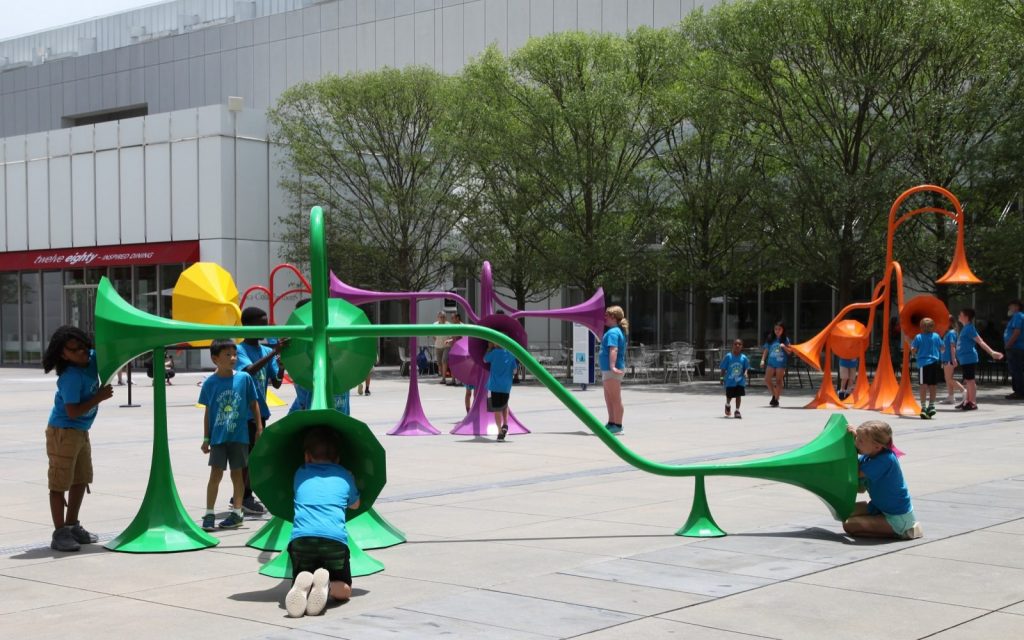Yuri Suzuki’s “Sonic Playground” // 2018
“Sonic Playground” is an installation of six interactive sound sculptures that transmit and manipulate sound depending on where you’re standing, listening, or speaking. The software used in this project was Grasshopper as a plug-in for Rhinoceros 3D, and both programs aren’t acoustic software, but in certain situations with certain frequency ranges, it can be done using ray-tracing techniques. What inspires me about this project is the child-like fantasy with its playfulness and nod to the talk tubes on playgrounds from childhood, and how Suzuki plays it up with physics, engineering, and computer software, using the shape of the parabolic dishes that require time to find the exact spot where you can hear the reflection of sound at its optimum.
Suzuki makes this installation effective by using the raytracing tool to replicate the design of the internal surfaces of a concert hall to maximize the sound that reaches and envelops the audience. However, I wish that the artist made the appearance a little more interesting and different than the talking tubes that can be found on playgrounds, or somehow appeal more to the adults than the children in a way that brings the adults joy in reminiscing their childhood memories.
Suzuki was inspired by the public space in Japan and the UK and how strangers don’t tend to start conversations with strangers, and he wanted to create an experience between people who must communicate through audio. He was also inspired by the sound mirrors in Kent that were originally built by the UK’s national defense force in the early 19th century.


![[OLD FALL 2019] 15-104 • Introduction to Computing for Creative Practice](wp-content/uploads/2020/08/stop-banner.png)